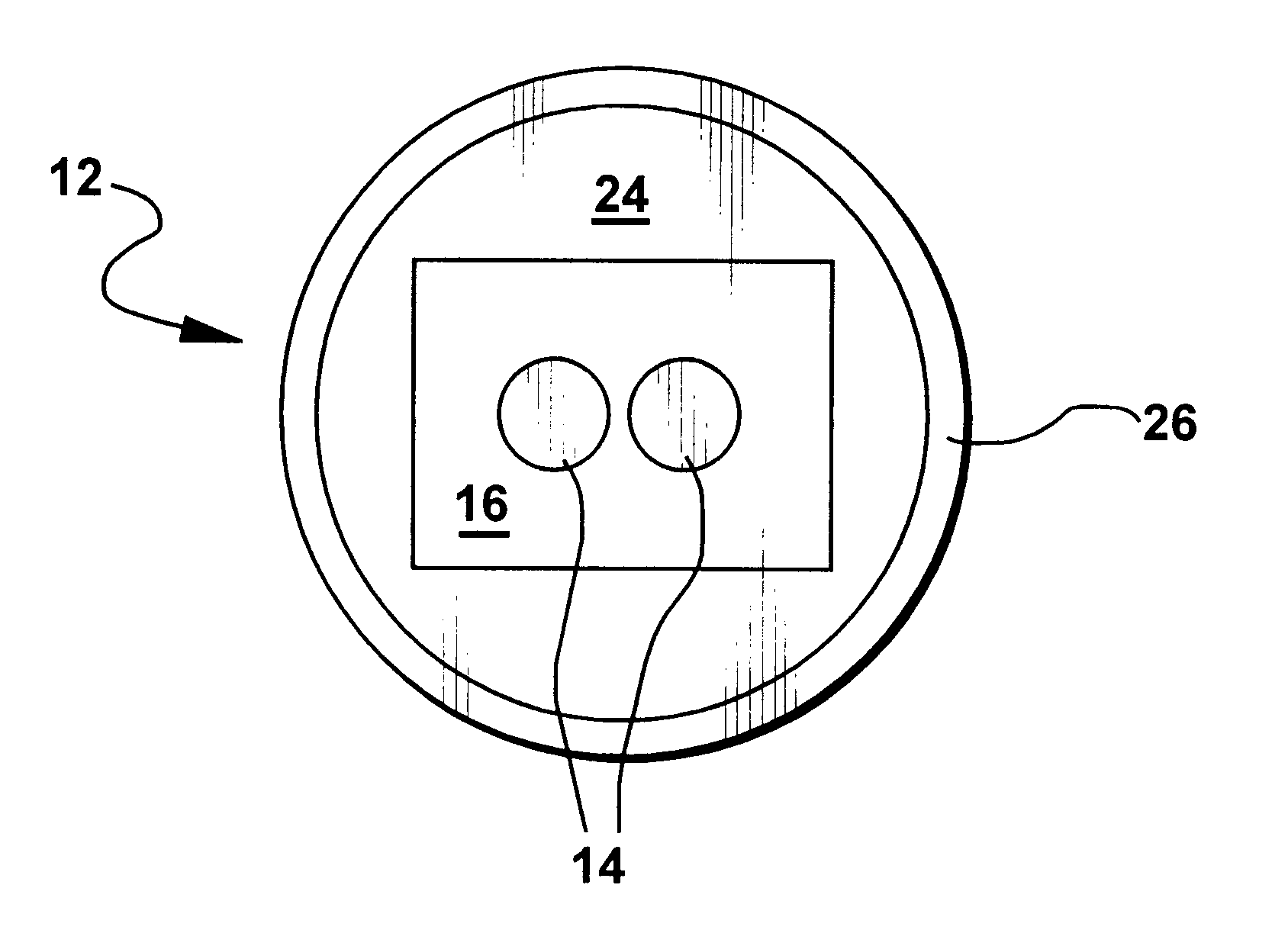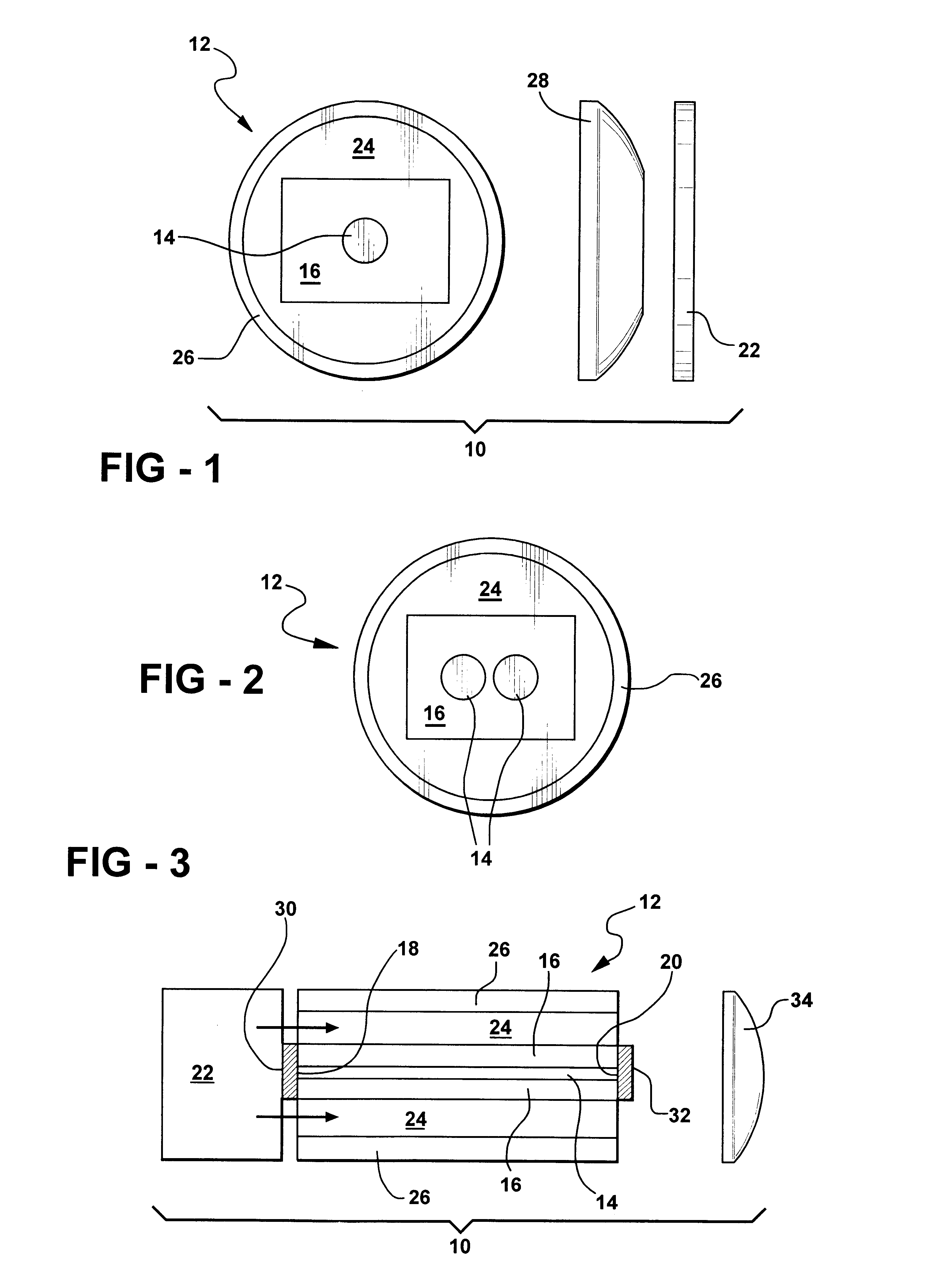Optical fiber laser structure and system based on ASE pumping of cladding element
a technology of optical fiber laser and cladding element, applied in the direction of laser details, excitation process/apparatus, active medium material, etc., can solve the problems of limited application of cladding pumping structure disclosed in the 501 patent, deficiency of conventional cladding pumping optical fiber laser structure,
- Summary
- Abstract
- Description
- Claims
- Application Information
AI Technical Summary
Benefits of technology
Problems solved by technology
Method used
Image
Examples
Embodiment Construction
Referring to the Figures, wherein like numerals indicate like or corresponding parts throughout the several views, an optical fiber laser system is generally disclosed at 10. The optical fiber laser system includes an optical fiber laser structure that is generally disclosed at 12 throughout the Figures. It is to be understood that FIGS. 1 through 3, disclosing the optical fiber laser system 10 and the optical fiber laser structure 12 of the subject invention, are not necessarily to scale.
The optical fiber laser system 10, hereinafter referred to as "the system," and the optical fiber laser structure 12, hereinafter referred to as "the structure," according to the subject invention provide laser activity, or laser radiation, at a laser wavelength of from 1500 to 1600, preferably from 1530 to 1545, and most preferably at 1535, nanometers (nm). This laser wavelength is an eye-safe wavelength that can be utilized in an eye-safe laser. It is generally understood that eye-safe lasers (Cl...
PUM
 Login to View More
Login to View More Abstract
Description
Claims
Application Information
 Login to View More
Login to View More - R&D
- Intellectual Property
- Life Sciences
- Materials
- Tech Scout
- Unparalleled Data Quality
- Higher Quality Content
- 60% Fewer Hallucinations
Browse by: Latest US Patents, China's latest patents, Technical Efficacy Thesaurus, Application Domain, Technology Topic, Popular Technical Reports.
© 2025 PatSnap. All rights reserved.Legal|Privacy policy|Modern Slavery Act Transparency Statement|Sitemap|About US| Contact US: help@patsnap.com


